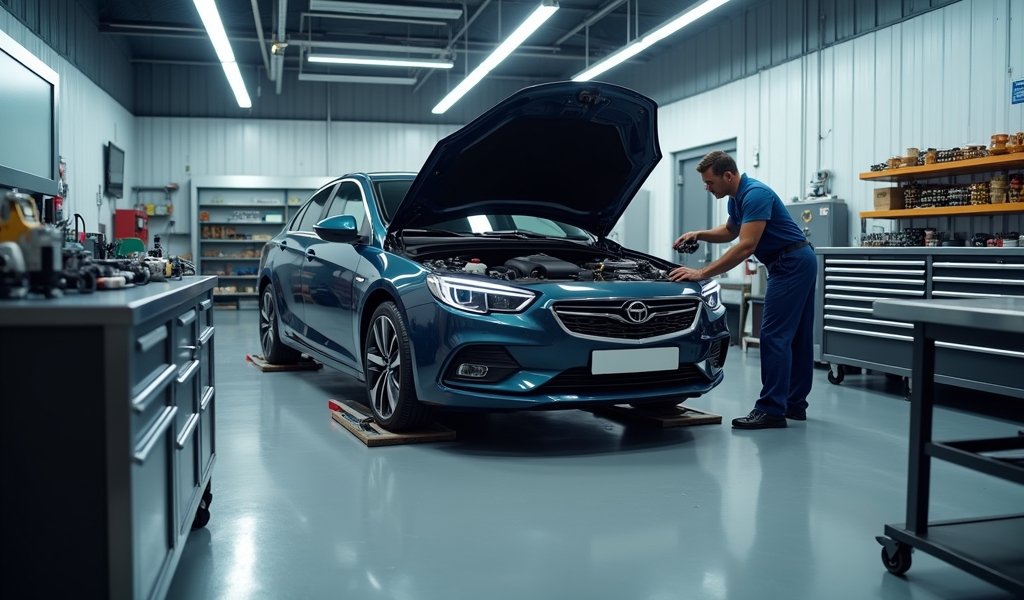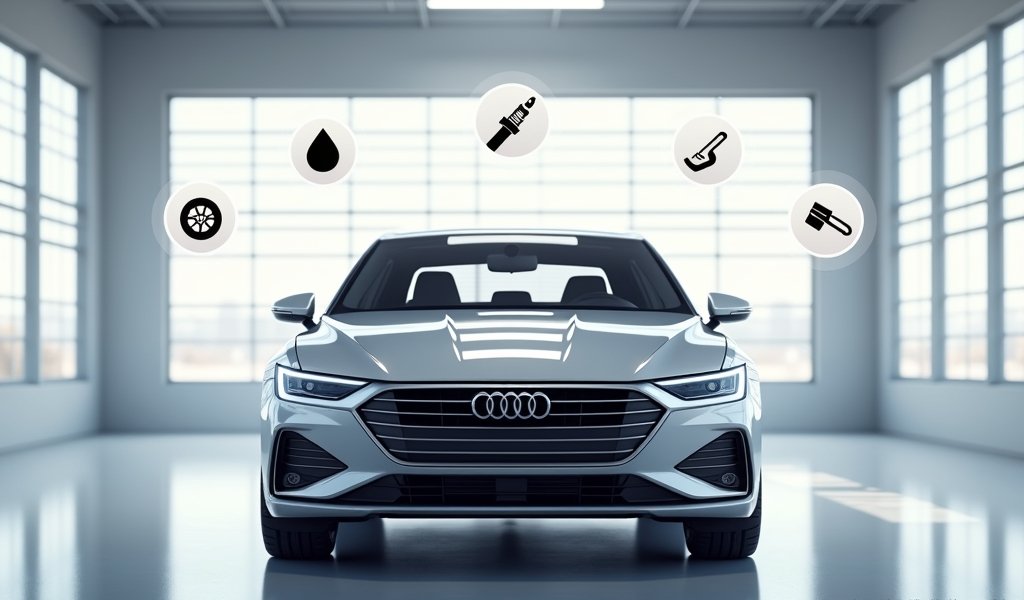Overview
The article outlines five essential car maintenance practices for vehicle longevity: regular oil changes, proper tire care, fluid level checks, filter replacements, and battery maintenance. By implementing these simple routines on a consistent schedule, car owners can prevent costly repairs, improve safety, increase fuel efficiency, and extend their vehicle’s lifespan.
Routine Vehicle Maintenance: 5 Essential Car Care Hacks
Understanding routine vehicle maintenance doesn’t have to be overwhelming, especially if you’re a first-time car owner. Think of your vehicle as a reliable partner that needs regular care to keep performing at its best. Just like we humans need checkups, your car requires consistent attention to ensure longevity and optimal performance. In this guide, I’ll walk you through five essential car care hacks that will save you time, money, and potential headaches down the road.
Having spent years helping new car owners navigate the basics of vehicle care, I’ve narrowed down the most critical maintenance tasks that anyone can master. These aren’t complicated procedures requiring specialized tools or expert knowledge – just simple, effective practices that will keep your vehicle running smoothly for years to come.
Table of Contents
- Why Regular Maintenance Matters
- Hack #1: Master the Art of Oil Changes
- Hack #2: Tire Care Essentials
- Hack #3: Fluid Level Checks
- Hack #4: Filter Replacements
- Hack #5: Battery Maintenance
- Creating Your Maintenance Schedule
- Conclusion
- Frequently Asked Questions
Why Regular Maintenance Matters
First things first – why should you care about routine vehicle maintenance? Simply put, regular maintenance prevents small issues from becoming major problems. Think of it as brushing your teeth to prevent cavities rather than waiting for a root canal.
Regular maintenance offers several compelling benefits:
- Extended vehicle life – properly maintained cars can easily surpass 200,000 miles
- Improved safety for you and your passengers
- Better fuel efficiency, saving you money at the pump
- Higher resale value when it’s time for a new vehicle
- Reduced risk of unexpected breakdowns
According to AAA, neglected maintenance leads to over 30 million roadside breakdowns annually. Most of these situations could have been prevented with basic care routines.
Now that we understand why maintenance matters, let’s dive into our first essential hack.

Hack #1: Master the Art of Oil Changes
Oil is your engine’s lifeblood. It lubricates moving parts, reduces friction, and helps maintain proper engine temperature. Without clean, adequate oil, your engine components would literally grind themselves to death.
For new car owners, understanding oil changes is perhaps the most fundamental maintenance task. While you can certainly take your vehicle to a professional, learning to change your oil yourself can save money and give you a better understanding of how your vehicle works.
Here’s what you need to know:
- Most newer cars need oil changes every 5,000 to 7,500 miles (check your owner’s manual for specifics)
- Choose the right oil type for your vehicle (again, your manual is your friend)
- Don’t forget to replace the oil filter with each oil change
- Check oil levels monthly using your dipstick – the oil should be amber/honey-colored, not dark brown or black
One useful hack is setting a calendar reminder based on your typical driving patterns. If you drive approximately 1,000 miles per month and need changes every 5,000 miles, schedule a reminder every five months. This simple system prevents you from losing track of this critical maintenance task.
Hack #2: Tire Care Essentials
Your tires are literally where the rubber meets the road. They affect everything from fuel economy to handling to safety in emergency situations. Yet many new car owners overlook basic tire maintenance until problems arise.
Let’s break down the essentials:
Tire Pressure
Maintaining proper tire pressure is surprisingly impactful. Underinflated tires reduce fuel efficiency by up to 3% according to U.S. Department of Energy research. They also wear out faster and can make your vehicle harder to control.
Get yourself an inexpensive tire pressure gauge and check monthly. The recommended pressure (usually between 30-35 PSI for passenger cars) can be found:
- On a sticker inside your driver’s side door jamb
- In your owner’s manual
- Sometimes on the sidewall of the tire itself (though this is typically the maximum, not optimal, pressure)
Tire Rotation
Front and rear tires wear differently due to steering, weight distribution, and whether your vehicle is front, rear, or all-wheel drive. Rotating your tires every 5,000-7,000 miles helps them wear evenly, extending their life considerably.
If you’re comfortable with a jack and lug wrench, you can rotate them yourself. Otherwise, this is an inexpensive service at most repair shops, often combined with oil changes for convenience.
Tread Depth
The classic penny test remains an effective way to check tread depth. Insert a penny with Lincoln’s head facing downward into your tire tread. If you can see the top of Lincoln’s head, your treads are worn and it’s time for new tires.
For even better results, consider investing in an inexpensive tread depth gauge for more precise measurements.
Hack #3: Fluid Level Checks
Your vehicle relies on several different fluids to operate properly, and checking them regularly can prevent major issues. Think of this as taking your car’s vital signs – a simple process that provides valuable information about your vehicle’s health.
Here’s a monthly fluid check routine that takes less than 10 minutes:
- Engine oil: Check when the engine is cool using the dipstick. Look for proper level and color/consistency.
- Coolant/antifreeze: Check the reservoir when the engine is cool. The level should be between the min/max lines.
- Brake fluid: Look at the brake fluid reservoir, typically located near the back of the engine bay. The level should be between the indicator lines.
- Power steering fluid: If your car has hydraulic power steering, check this reservoir as well.
- Windshield washer fluid: Top this off regularly, especially during winter or bug season.
One hack I recommend to my first-time car owner friends is to create a simple checklist on your phone. Take photos of each fluid reservoir when full so you have a reference image of what “good” looks like. This visual guide makes future checks much easier, especially if you’re still learning where everything is located.
Low fluid levels often indicate a leak or consumption issue that should be addressed promptly. Catching these problems early through simple DIY inspections can prevent much costlier repairs down the road.
Hack #4: Filter Replacements
Your car uses several filters to keep contaminants out of critical systems. Think of these as your vehicle’s immune system – when they’re clogged or dirty, performance suffers. The good news is that most filter replacements are simple enough for even first-time car owners to handle.
Air Filter
The engine air filter prevents dust, dirt, and debris from entering your engine. A clogged filter restricts airflow, reducing power and fuel economy. Most air filters should be replaced every 15,000-30,000 miles, but dusty conditions might require more frequent changes.
To check your air filter:
- Locate the air filter box (usually a black plastic box on one side of the engine)
- Open the clips or remove screws to access the filter
- Hold it up to light – if you can’t see light passing through, it’s time for a replacement
Replacement filters typically cost $10-20, and the swap takes just minutes with no special tools required.
Cabin Air Filter
Many new car owners don’t even realize their vehicle has a cabin air filter. This filter cleans the air coming through your ventilation system. When clogged, it reduces airflow and can contribute to window fogging and unpleasant odors.
Most cabin filters are located behind the glove compartment and should be replaced annually or every 15,000-25,000 miles. Your owner’s manual will show the exact location and replacement procedure.
Fuel Filter
The fuel filter prevents contaminants from reaching your engine’s fuel system. On many newer vehicles, it’s part of the fuel pump assembly and doesn’t require regular replacement. On older vehicles, it’s typically replaced every 30,000-50,000 miles.
This is one filter change that might be best left to professionals unless you’re comfortable working with fuel systems.

Hack #5: Battery Maintenance
Few things are more frustrating than turning your key (or pushing the start button) only to hear…nothing. Battery issues are among the most common reasons for roadside assistance calls, yet basic battery maintenance can prevent most problems.
Here’s how to keep your battery healthy:
- Regular inspection: Check for corrosion (white, powdery buildup) on battery terminals. Clean it using a mixture of baking soda and water, applied with an old toothbrush.
- Secure connections: Ensure battery cables are tight and secure. Loose connections can prevent proper charging.
- Test the battery: Most auto parts stores will test your battery for free. Consider getting it checked annually once your battery is over three years old.
- Minimize battery drain: Avoid leaving lights or accessories on when the engine isn’t running. In extremely cold weather, consider a battery insulator or parking in a garage.
One lesser-known hack is to apply a thin layer of petroleum jelly to battery terminals after cleaning them. This creates a barrier that prevents future corrosion and ensures good electrical contact.
Most car batteries last 3-5 years, but proper maintenance can extend their life significantly. Being proactive with battery care is one of the easiest ways to avoid unexpected breakdowns.
Creating Your Maintenance Schedule
Now that we’ve covered the essential maintenance tasks, let’s put it all together into a manageable schedule. The key to successful routine vehicle maintenance is consistency, and having a simple system makes that much easier.
I recommend creating a three-tier maintenance plan:
Monthly Checks (10 minutes)
- Tire pressure and visual inspection
- All fluid levels
- Lights and signals
- Windshield wipers
Seasonal Maintenance (Spring and Fall)
- Battery test/inspection
- Air filter check
- Cabin filter check
- Belts and hoses visual inspection
Mileage-Based Maintenance
- Oil changes (per manual, typically 5,000-7,500 miles)
- Tire rotation (5,000-7,000 miles)
- Brake inspection (10,000-15,000 miles)
Digital tools can make tracking easier. Consider using your phone’s calendar for recurring reminders or try a car maintenance app like CARFAX Car Care or aCar. These apps can track your maintenance history, send reminders, and even help you monitor fuel efficiency.
For first-time car owners, I strongly recommend reading through your vehicle’s maintenance schedule in the owner’s manual. Every vehicle has specific requirements, and following these guidelines is the best way to ensure reliability and prevent warranty issues.
Conclusion
Routine vehicle maintenance doesn’t have to be complicated or intimidating. By mastering these five essential car care hacks – oil changes, tire care, fluid checks, filter replacements, and battery maintenance – you’ll be well on your way to becoming a confident, knowledgeable car owner.
Remember, the goal isn’t to become a professional mechanic. The goal is to understand your vehicle’s basic needs and develop simple habits that will save you money and prevent problems. Even if you eventually delegate some tasks to professionals, understanding what needs to be done and why puts you in control of your vehicle’s care.
Start small, be consistent, and don’t hesitate to ask questions when you’re unsure. Your future self (and your wallet) will thank you for the time you invest in routine vehicle maintenance today.
Ready to take your car care to the next level? Contact our team at KnowsYourCar for personalized advice tailored to your specific vehicle. Our experts can help you create a customized maintenance plan that fits your driving habits and extends the life of your car.
Frequently Asked Questions
How often should I change my oil?
Most modern vehicles need oil changes every 5,000-7,500 miles. Always check your owner’s manual for the manufacturer’s specific recommendation for your model.
What happens if I skip routine maintenance?
Skipping maintenance leads to accelerated wear, reduced fuel efficiency, and eventually major component failures. What might have been a $30 oil change could become a $3,000 engine repair.
Can I do all maintenance myself or should I use a professional?
Many routine maintenance tasks (fluid checks, filter replacements, tire pressure) are simple DIY jobs. More complex tasks like brake work or timing belt replacement are often best left to professionals.
How do I know when my tires need replacement?
Use the penny test (insert a penny with Lincoln’s head down into the tread – if you can see the top of his head, tires need replacement). Also watch for uneven wear, bulges, or cracks in the sidewall.
What’s the most commonly overlooked maintenance item?
Cabin air filter replacement is frequently forgotten, leading to poor ventilation and potential allergens in your vehicle. Check and replace it annually for better air quality.


Pingback: Best Car Maintenance Practices: 7 Proven Tips for Longevity - knowsyourcar.com
Pingback: Car Maintenance Schedule by Mileage: 7 Proven Tips - knowsyourcar.com
Pingback: Fleet Vehicle Maintenance: 10 Best Tips - knowsyourcar.com